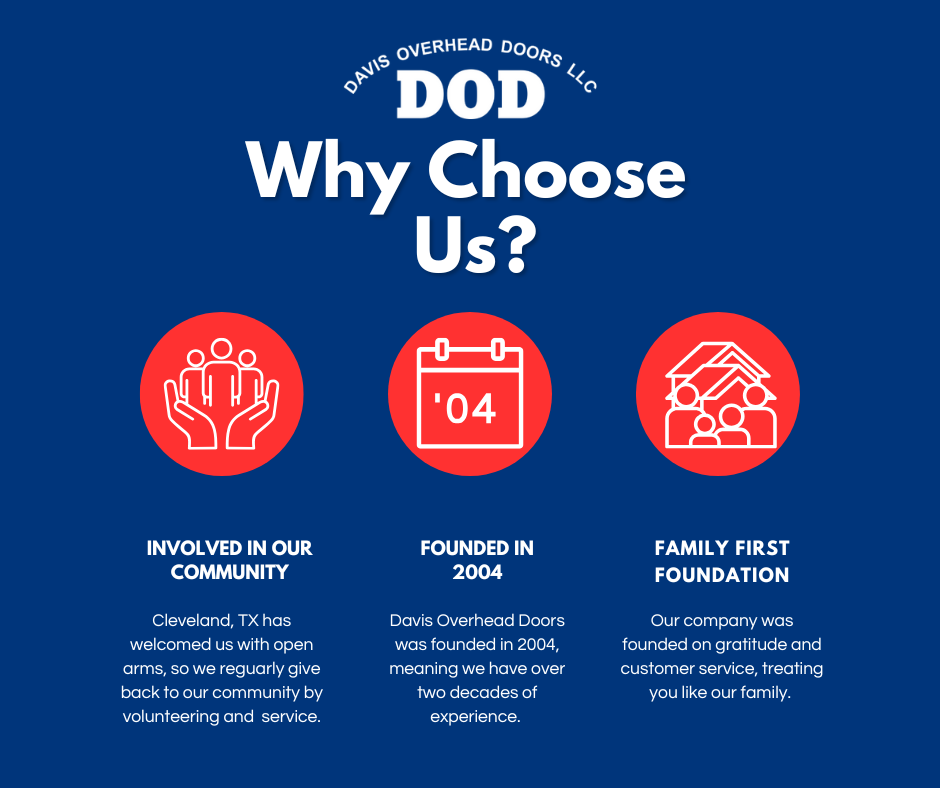
Since 2004, Davis Overhead Doors has been your local, family-owned and operated garage door company here in Liberty County, TX. We offer the best garage door installation near you in Cleveland, TX, providing new garage doors to homeowners in the area with the following services:
- Garage Door Installation
- Garage Door Replacement
At Davis Overhead Doors, we believe that a well-installed garage door not only enhances the curb appeal of your home or business location but also ensures its safety and convenience. That’s why we offer top-rated garage door installation services for all of our local Texas service areas near Liberty, Harris, and Chambers Counties.
Here's what a recent client of Davis Overhead Doors had to say about our garage door installation services: "Anthony is fantastic! Communicates, shows up when he says he will, and does great work. He walked us through our door options, costs, all very upfront and with great prices. The installation went great, the door works great. I highly recommend these guys."
Give us a call to elevate the look and feel of your Texas home or business today!
Choosing the right styles and materials for your garage door are key elements to making your garage door installation stand out! You can choose to go bold or blend in with colors, finishes, and materials that best accentuate your property’s existing features.

Davis Overhead Doors is eager to serve you. Allow us to install the garage door of your dreams for your local Texas home or business. Give us a call today to get started!
Get Started